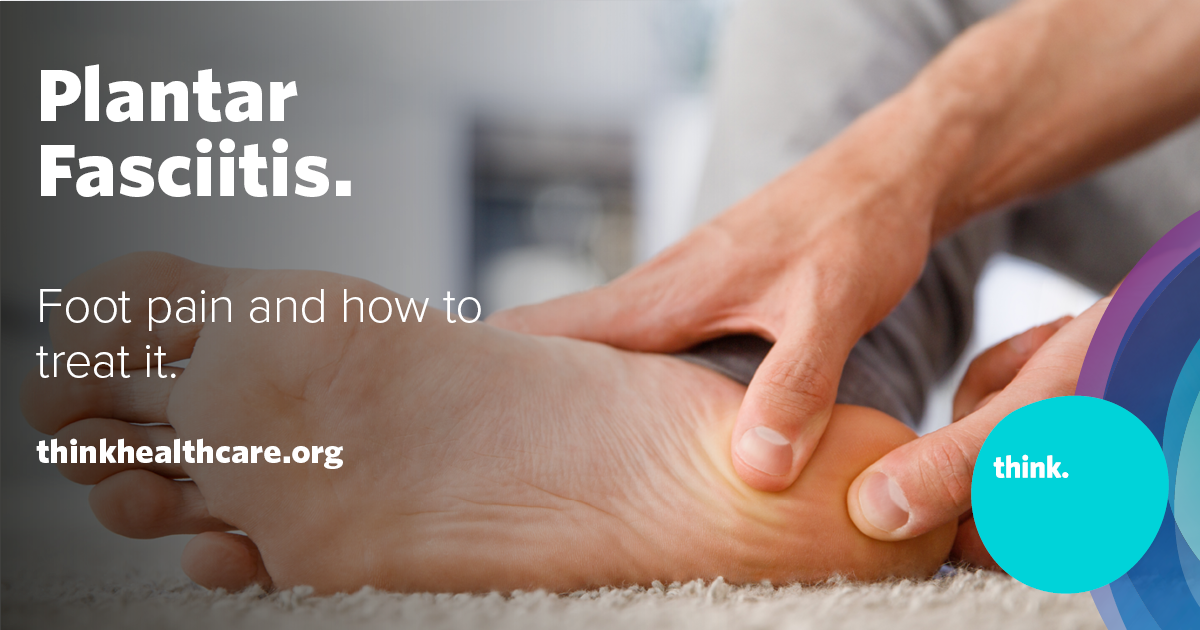It’s safe to say that you know what it feels like to have foot pain if you spend any time on your feet. For about 75% of the US population, foot pain is common. For some, this persistent pain can become debilitating. Plantar fasciitis is a painful inflammation of the ligament and its attachment to the heel bone. Plantar fasciitis is the most common cause of pain on the bottom of the heel, with approximately 2 million patients treated for this condition every year.
What causes plantar fasciitis?
Plantar fasciitis can be caused by several factors such as:
- tanding for long periods.
- Being overweight
- Wearing non-supportive shoes
- An increased activity like running or walking
- Having extremely tight calf muscles
- Abnormal feet structure-flat feet or higher-than-average arches
Women tend to be diagnosed with plantar fasciitis more often than men.
There is a lot to learn about this common condition. The most common explanation of what causes this painful affliction is when the fascia (connective tissue) that ties your heal to your toes becomes inflamed through repeated micro-tears. This repeated ‘trauma’ eventually causes inflammation and pain.
Common symptoms of plantar fasciitis.
The early stages of plantar fasciitis begin with mild pain the heal. Heel pain will feel deep as if your heal bone was bruised. It is often referred to as a stone bruise. Over time, the pain does not subside and will become worse and more persistent. In more advanced stages, people experience stabbing pain in their heal. It’s more prominent when they stand for long periods or when you stand after sitting.
Over time, people with plantar fasciitis will change their walking patterns or body mechanics to avoid pain which results in joint, hip, and back problems.
Treatment for plantar fasciitis
Over 90% of heel pain cases improve and do not require surgery with proper treatment and management. Studies have shown that delaying treatment can adversely affect outcomes and prolong treatment.
Some common and effective treatments include:
Stretching-There are easy-to-master stretching exercises you can do to help relieve tightness in the fascia.
Rest-When your plantar fasciitis flares up, rest and avoid putting weight on your foot until the inflammation subsides.
Ice-Using ice packs for 10-20 minutes, 3-4 times per day, can help reduce inflammation.
Medication-Anti-inflammatory medications can help relieve inflammation and pain. Consult your physician or clinical pharmacist on which over-the-counter medication is suitable for you.
Use of therapeutic insoles-You may benefit from using an insole that will provide more support. There are many types of support insoles available on the market. Consult with your podiatrist to determine which is right for you.
Medications-There are topical creams to help with pain and inflammation and over-the-counter pain relievers. Cortisone injections have proven to treat the inflammation of plantar fasciitis effectively. Ask your podiatrist, physician, or clinical pharmacist to determine the correct medication for you.
Surgery-If the less evasive treatments prove unsuccessful, you may require surgical intervention. Two common interventions are fascia release—cutting a portion of the fascia to relieve tension; or gastrocnemius recession, which lengthen your calf muscle relieving the strain on the plantar fascia.
Final thoughts about foot pain.
Foot pain can be debilitating and will affect 75% of the US population at one time or another. It can affect a person’s independence and sense of confidence, not to mention it’s incredibly painful! You don’t have to live with foot pain. Please talk with your Primary Care physician or make an appointment to see our resident podiatrists and have your feet checked for plantar fasciitis. With proper diagnosis and treatment, you can be back on your feet in no time!
